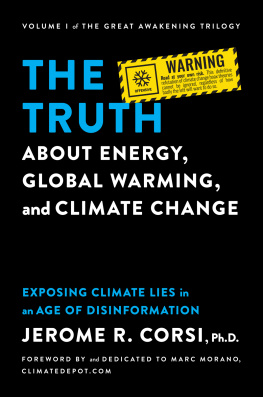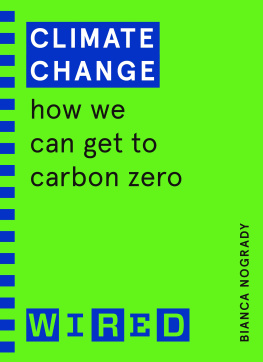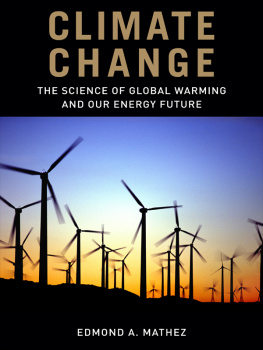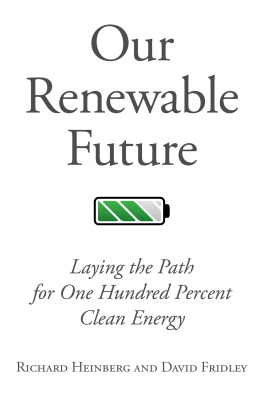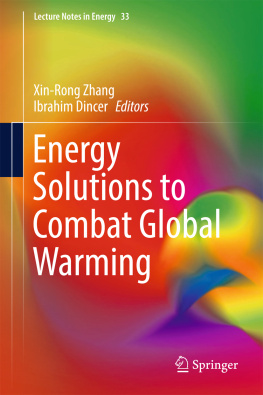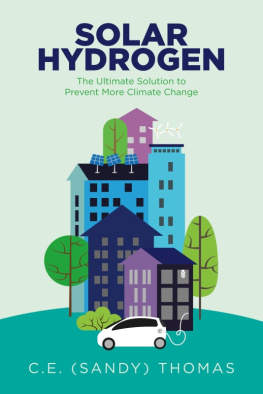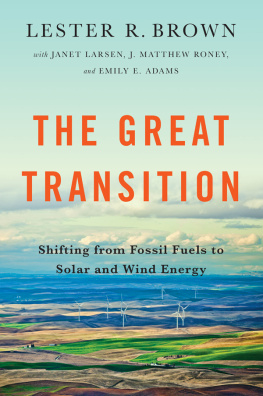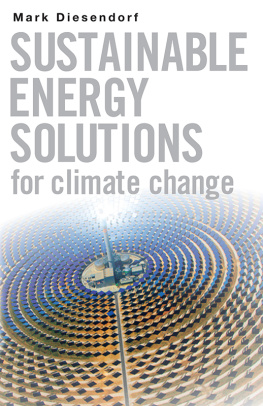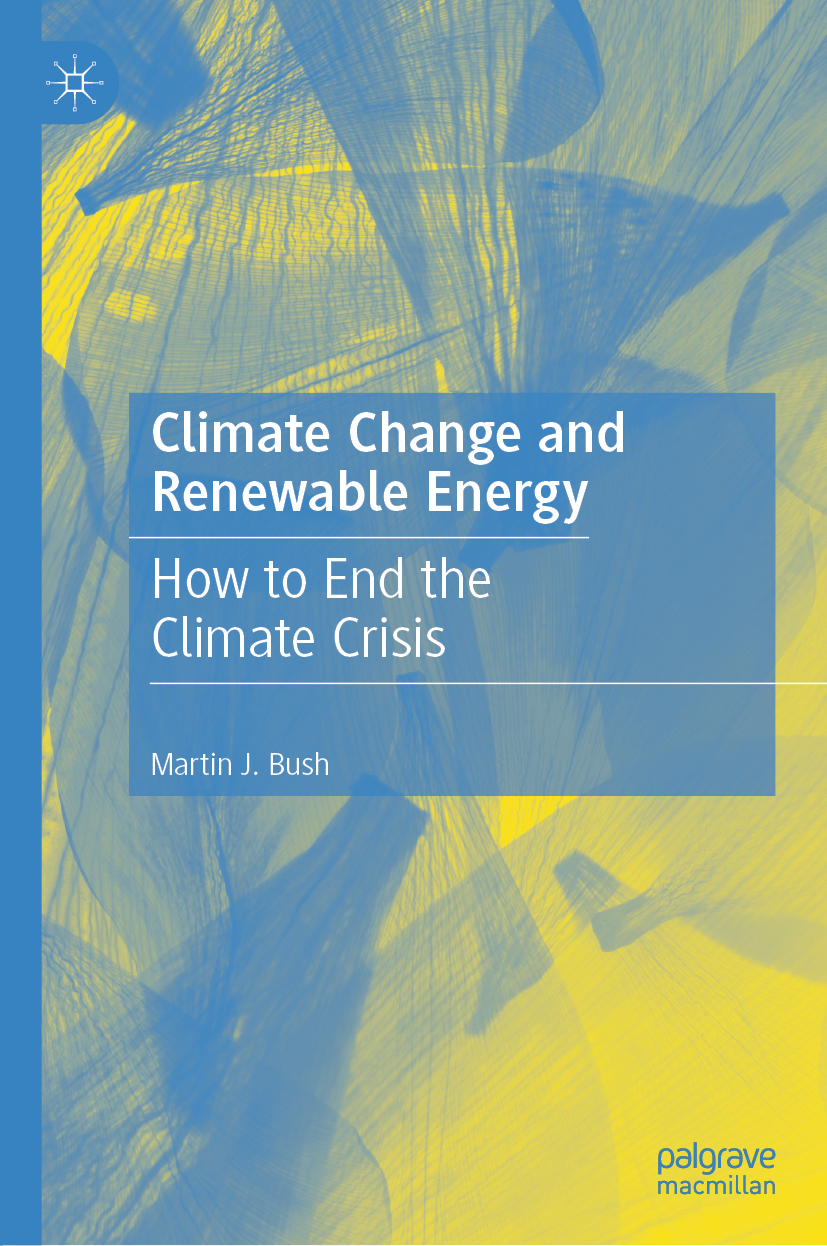Martin J. Bush
Climate Change and Renewable Energy
How to End the Climate Crisis
Martin J. Bush
Markham, ON, Canada
ISBN 978-3-030-15423-3 e-ISBN 978-3-030-15424-0
https://doi.org/10.1007/978-3-030-15424-0
The Editor(s) (if applicable) and The Author(s) 2020
This work is subject to copyright. All rights are solely and exclusively licensed by the Publisher, whether the whole or part of the material is concerned, specifically the rights of translation, reprinting, reuse of illustrations, recitation, broadcasting, reproduction on microfilms or in any other physical way, and transmission or information storage and retrieval, electronic adaptation, computer software, or by similar or dissimilar methodology now known or hereafter developed.
The use of general descriptive names, registered names, trademarks, service marks, etc. in this publication does not imply, even in the absence of a specific statement, that such names are exempt from the relevant protective laws and regulations and therefore free for general use.
The publisher, the authors and the editors are safe to assume that the advice and information in this book are believed to be true and accurate at the date of publication. Neither the publisher nor the authors or the editors give a warranty, expressed or implied, with respect to the material contained herein or for any errors or omissions that may have been made. The publisher remains neutral with regard to jurisdictional claims in published maps and institutional affiliations.
Cover credit: Marina Lohrbach_shutterstock.com
This Palgrave Macmillan imprint is published by the registered company Springer Nature Switzerland AG
The registered company address is: Gewerbestrasse 11, 6330 Cham, Switzerland
This book is dedicated to all the young people of the world who have found themselves to be living on a planet in serious existential trouble. Never before in the history of planet Earth has a single species, in this case homo sapiens, been so dangerously and mindlessly destructive to the point where its selfish actions threaten to trigger a sixth extinction. There is still time to save most of humanitybut only if there is forceful and rapid international action to curb global heating and slowly and eventually reverse the worsening impacts of the changing climate. For Michael, Corry, Sonny, Zaina, Johnny and Aida, growing up in the thick of the worsening climate crisis, their future welfare and well-being is uncertain and fraught with danger. My hope is that this book will make a small contribution to the groundswell of global action as a younger generation of vocal activists force moribund politicians to finally take stronger and more effective measures to bring the climate crisis to an end.
Preface
Many excellent books have been written about global heating and climate change. Even more about renewable sources of energy; but far fewer about how these inexhaustible sources of clean energy are the key to slowing and eventually halting the emissions of the carbon gases that are driving the planet towards a dangerously warmer state.
In this book I show how these climate change-related dimensions are linked and interrelated. I explain how inexhaustible supplies of renewable energy can replace coal, oil and natural gas; how the transport sector will become electrified; and how all new buildings will soon be super energy-efficient and powered by electricity from renewable sources of energy. The fly in the ointmentand its a very big flyare the fossil fuel and petrochemical companies and their allies in government agencies who are working night and day to try and block the transition to clean renewable energy.
Its obvious to most people that the planet is in serious trouble. Although the climate deniers and contrarians are trying hard to convince us that global heating is not happening and that the climate is not changing (or if it is, its not because of what we humans are doing), the scientific evidence for a warming planet caused by the emissions of greenhouse gases from human industry and energy use is now indisputable. Anyone who reads up on the subject and consults the mainstream scientific journals can easily separate fact from fiction.
From north pole to south, the planet has entered an era of unprecedented disruption and deteriorationat least since homo sapiens first walked the Earth. The most visible and obvious signs are the stronger and more destructive hurricanes and cyclones, the insufferable heatwaves, the increased frequency of floods that displace thousands sometimes millions of people, the melting glaciers, and the massively destructive wildfires. But behind the scenes, in the undergrowth of the forests and deep in the oceans, the natural world is struggling to survive. While many urban communities, at least in the wealthy industrialised countries, can mostly handle the extreme weather and the wildfires, the loss of biodiversity and the extinction of numerous species of all types of animals, especially insects, is inevitably going to cause widespread disruption of agriculture, fisheries, and the services provided by natural ecosystems everywhere around the world. There is no technical fix for extinction.
People will flee from lands parched by continuous drought and so scorched by heat that agriculture is almost impossible. The first signs of a regional migration out of the areas of the world most afflicted by drought, floods, and heatwaves are already becoming clear. The links between climate change, migration, and conflict are increasingly being examined and confirmed.
In order to understand why global heating is happening and how it causes the climate to change, it is necessary to grasp some of the basics of climate science. This book explains them in terms that everyone can understand. Then we look more closely at the fossil fuel industries. We count the miners dying from black lung disease, the tailings pond disasters, the mercury emissions, and the coal train fatal accidents. The roll call of disasters for the oil industry is worse: the offshore oil rig explosions and marine pollution; the tanker collisions and oil spills; the pipeline fractures and fires; and the oil train accidents and explosions, are a continual litany of catastrophic disasters. Then theres fracking and the biggest environmental mess of all: the Canadian tar sands.
Huge solar photovoltaic arrays and megawatt scale wind farms are now generating electricity at the same scale as fossil fuel power plants, and at a fraction of the cost. The levelized cost of electricity from solar energy and wind power is now below that of electricity generated by conventional coal, oil and natural gas. Market forces and investor self-interest will eventually side-line the fossil fuelsexcept where politicians in the pocket of the oil companies and petrochemical conglomerates try to block this inevitable transition. This book takes an eye-opening look into the shadowy, dark-money world of regulatory capture, SLAPP suits, ad hominem attacks on climate scientists, and how the oil companies are prepping your children for a fossil fuel future.
Most of the 190-plus countries that signed up to the 2015 Paris Agreement are gradually reducing their emissions of greenhouse gasesor say they plan to. But three major scientific reports published in late 2018 and early 2019 documented the dangers of moving forward so slowly. Those studies showed that we are not on course to keep global warming to below 2 C above pre-industrial era levels. Not even close.


